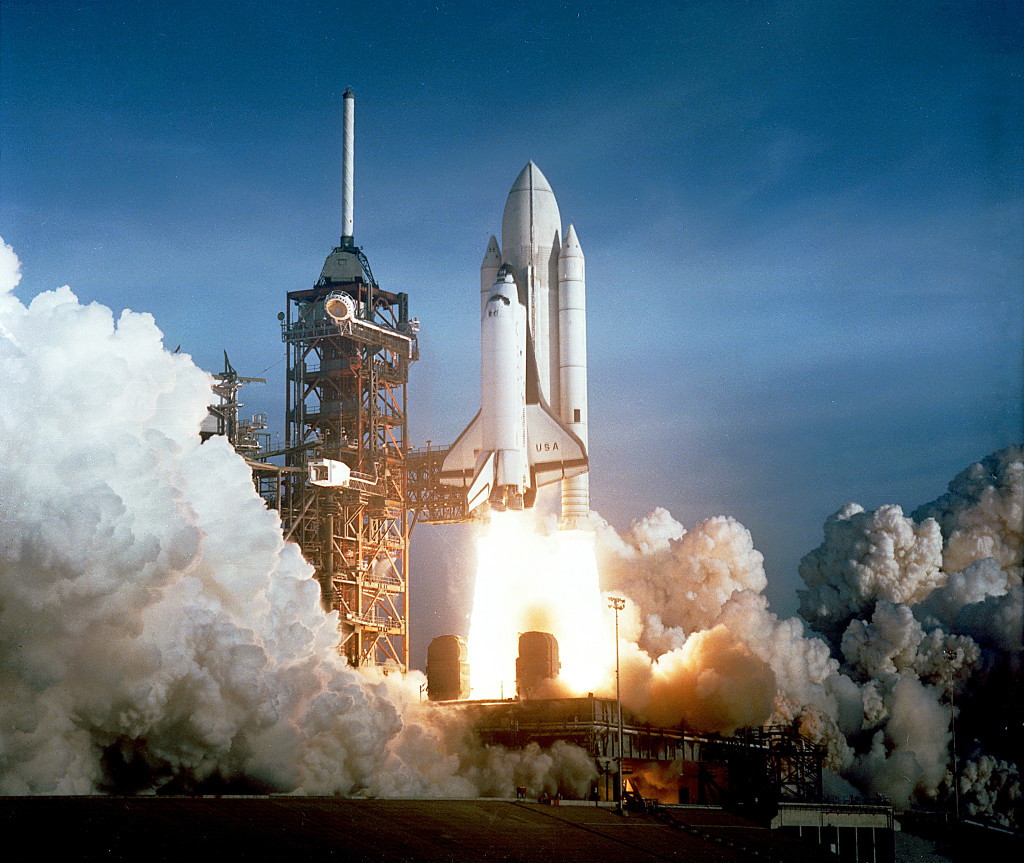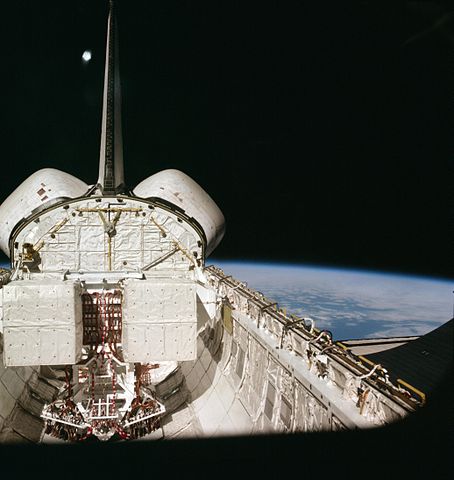Today marked the 40th anniversary of the launch of Columbia on the first mission of the Space Shuttle Program, STS-1. It’s a little hard for me to think that it was that along ago, or that the program would go on for just over 30 years, ending in July of 2011 after 135 missions.
Of course, the program would be marked with two major disasters, the loss of Challenger in 1986 and the loss of Columbia in 2003. Hindsight is 20/20 as they say and looking at the design of the shuttle in retrospect many safety issues become obvious. Compared to virtually any other crewed launch platform that existed before or after, the Shuttle was definitely a unique breed of machine and, more amazingly to think about, one that had never actually been launched into space before this moment.

Sure, there were the late 70’s Approach and Landing tests using the prototype orbiter Enterprise, but those were simply landing tests in the atmosphere, with the orbiter gliding off the back of its carrier aircraft to test landing and atmospheric performance. All the other testing of the design was done using wind tunnels and calculations — there were no un-crewed tests like had happened with Vostok, Soyuz, Mercury, Gemini, or Apollo.
It goes beyond the orbiter itself, however, to include the entire launch system — the amazing RS-25 Space Shuttle Main Engines hadn’t flown in space before. The Solid Rocket Boosters, the largest solid rockets in the world at that time, had never been launched, and certainly nothing with that particular configuration of orbiter, fuel tank, and boosters had flown in any form.
STS-1 was the first test flight — the proof that the system could, and would, work.
Oddly, it wasn’t even supposed to be that — the original first flight was to actually be an abort test of what was considered by everyone to be the most stressful type of abort the Shuttle could conduct – Return to Launch Site where the orbiter would, during its climb, actually turn around after SRB burnout and return to Kennedy Space Center. Stresses on the orbiter would be incredible and STS-1 Commander John Young, among others, voted against this being tested. The first flight was to be an actual orbital mission, as would every Space Shuttle flight.
It wasn’t a flawless flight. While short, there was some damage to the orbiter during the initial launch, and procedures were refined for later missions to reduce the chance of such damage on future launches. Columbia did, of course, survive this flight as it did all but its last – STS-107 in early 2003, when foam damaged the leading edge of one of the orbiters wings, causing it to disintegrate on re-entry.

It feels odd to me, that the Shuttle seems almost forgotten today, not even 10 years after the program ended. While humanities presence in space has continued and, indeed, there are launch service providers operating from the United States again, they are private industry — not something truly “American” to me in the same sense as the Shuttle was.
They are also overly celebrated, if you ask me, for being less impressive on a whole. The Space Shuttle actually went into orbit, stayed there for up to 16 days on the longest mission, and then conducted a proper re-entry and glided to a landing 133 times — STS-51L was, of course, lost during launch, and STS-107 was described above: every other mission landed without issue. The orbiters and Solid Rocket Boosters were reused, with only the external fuel tank for the SSME’s being disposed of.
Compared this to the Falcon 9 which only the first stage is reused – the upper stage is left to burn up. The first stage doesn’t go into orbit or come anywhere close to the velocity required — it simply does the job as all 1st stages do of getting the second stage to its operational altitude and velocity to begin doing its thing. Sure, it comes back and lands and can be re-used, but after what would seem to me to be a less stressful flight profile. It’s just a hop by comparison, but one that so many people who are into space now “because it’s cool” seem to think is incredible… all while they ignore what an amazing machine the Shuttle was in its own right, and the time it came from — it did so much with so relatively little.
It was an incredible thing, something that we may not have again within my lifetime. The Success of the program has been historically overshadowed by tragedy and, now, by a hype culture that misses the point completely. Were it not for a few key design flaws (which deserve their own article, honestly) it’s likely we would still be flying the shuttles today, budget willing.
As John Young said upon the landing of STS-1, the entire thing was “Something just short of a miracle.”

1 Comment
Add a Comment